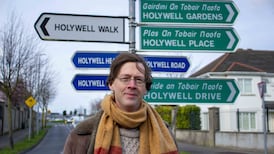Gerard Gearty, who has died aged 84, was a pioneer of interventional cardiology and has been described as the greatest Irish contributor to modern cardiology in the past quarter of a century.
Born in Longford where his father was a solicitor, he was the eldest of six children. He studied medicine at UCD and there he met Teresa Flanagan whom he married in 1956. He was an active member of the GAA at university: he was on the team that won the Sigerson Cup in 1949 and played in goal for the Longford county team.
He won a gold medal in anatomy and the Mater Clinical Prize when graduating in 1953. He moved to UCC to carry out research in physiology, obtaining a BSc in 1955 and an MSc in physiology in 1957. He became senior house officer in the children's hospital Alder Hey in Liverpool and later registrar in paediatric cardiology.
He finished his training in Liverpool's Sefton Hospital. When he joined the Regional Cardiac Centre at Sefton, Gearty was so well trained in complex cardiac procedures that he took over the workload without any instruction.
First-rate service
He became a consultant to the Royal City of Dublin Hospital on Baggot Street in 1963. With cardiac surgeon Keith Shaw and anaesthetist David Hogan, he developed a first-rate cardiac service there which became increasingly demanding on theatre space, particularly with the improvements in valve replacement and the emergence of vein grafting for heart disease.
This led Keith Shaw and Mater hospital colleague Eoin O’Malley to establish a national open heart unit at the Mater: patients were investigated at Baggot Street, operated on at the Mater and returned to Baggot Street for care.
Keeping abreast of international developments, Gearty established an intensive coronary care unit at Baggot Street and also the Dublin cardiac ambulance service.
The development of vein grafting for coronary artery disease created a demand for high-standard coronary angiography. Gearty became familiar with the technique at the Royal Hospital Hammersmith and King’s College Hospital, London in 1972. On his return he began coronary angiography in Ireland.
A decade later there was much excitement in medical circles when Andreas Grunzig developed coronary angioplasty. Gearty learned the technique from Grunzig in Atlanta in 1982 and then introduced it in Dublin. His work led to several reports in leading international journals such as the British Heart Journal .
Children
Gearty worked at the National Children's Hospital on Harcourt Street and later also at Our Lady's Hospital, Crumlin, where he assessed young children with congenital heart defects for surgery. He also carried out delicate investigations on infants with heart problems .
With the passage of time he got some relief from his punishing schedule with the appointment of colleagues, the late Brian Maurer, Ian Graham, Michael Walsh and Peter Crean. Gearty trained and inspired many doctors who went on to become leading cardiologists at home and abroad.
Writing about him in 2006, one of his younger colleagues, Ian Graham, described Gearty as undoubtedly the greatest Irish contributor to modern cardiology over the past quarter of a century.
“Gerry exhibited the pure bravery to ‘have the courage to fail’ which marks out surgeons and cardiologists involved in practical procedures who have the faith in themselves and their techniques to proceed through adversity to success.”
He was awarded an honorary DSc by Trinity College Dublin in 1991, was a founder member and president of the Irish Heart Foundation and an active member of the British and Irish cardiac societies.
Integrity
He was a man of great integrity and, despite his considerable achievements and professional reputation, was very unassuming with little time for pretension in others.
Following retirement, he continued to teach at St James’s Hospital until his mid-70s, always with the same youthful enthusiasm.
Teresa’s death in 2011 was a major blow from which he never really recovered. Throughout his life his love of and commitment to her and their family was always his guiding light.
He is survived by daughters Ann and Mary Rose, and sons Joseph and Ciarán.









